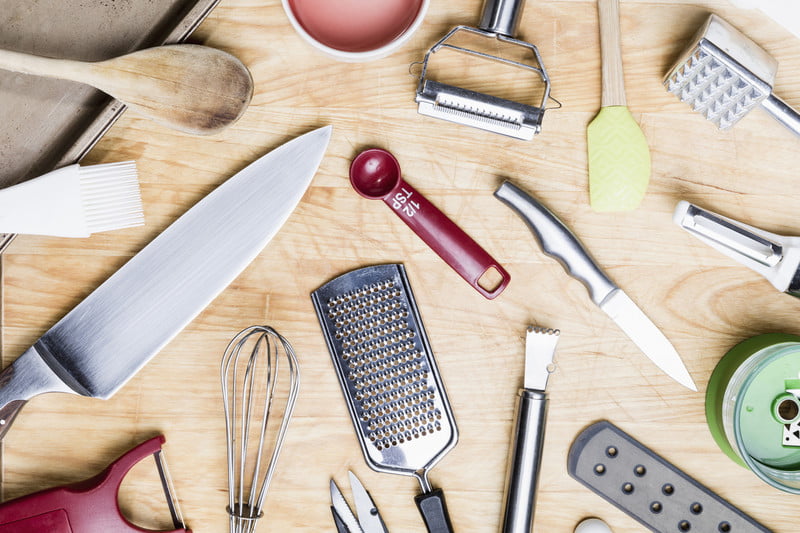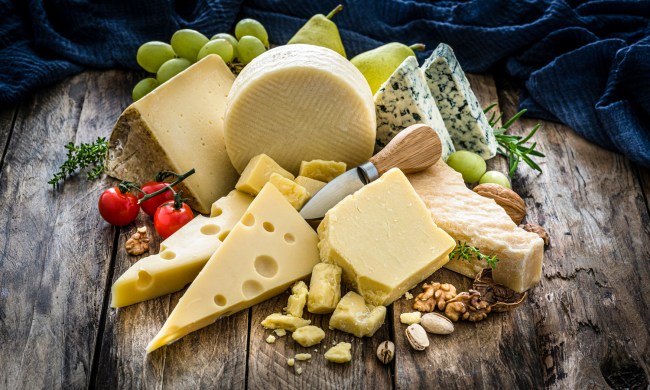You don't need a $90K kitchen to remodel to better enjoy all of your many culinary adventures. But you do need some order in there, from basic layout instruction to tidiness routines that will keep the space at its best for all of your cooking, baking, and sauce-making needs.
For the home cook, the kitchen is one of the most-used spaces in the entire dwelling. As such, it should be organized so that one can operate cleanly and functionally in there. Without too many extra tools or extra effort, you can get your kitchen up to speed from an organizational standpoint and keep it there, making it more fun to work in and something you might even want to show off to friends.

Purge Unused Equipment
Less is often more in the kitchen and it's easy to forget that. Before you get to organizing what you do have, get rid of what you don't need. Ask yourself how often you use some of the items you find, especially the specialized ones. Also, you may have extras of certain things you just don't need spares of (toasters, can openers, cheese graters, colanders, stovetop espresso makers, that sort of thing).
Don't just trash or recycle these items. For things that are in pretty good shape, donate them to your favorite local thrift shop or pass them along to neighbors in need.
Designate Your Drawers
While it's easy to have one or multiple miscellaneous drawers in a kitchen, it's not allowed. A chaotic drawer like that will only waste your time when you're looking for something you need, and quick. Designate those drawers. Keep the top ones full of specifics you'll be reaching for often, like spices, knives, utensils, hot pads, and oven mitts.
Map it out according to use. The bigger pots and pans can hide away in a lower drawer or cabinet while your food pantry should be pretty accessible. And speaking of, keep these edibles as organized as you would your spice rack or bar cart. Establish a system and label your sections of ease of use. Have a designated spot for snacks, pasta, grains, canned goods, and more in your pantry. Think about setting it up by similar food groups or even by meal, devoting a shelf to breakfast goods, lunch goods, and commonly used dinner goods.
Hanging or mounting things is always an option but be mindful of your space. Without raised ceilings or ample wall space, you can create significant clutter and do more harm than good. Make sure at least one drawer or cabinet is reserved for cleaning supplies. Easy access to the stuff that does the cleaning in the first place will keep your kitchen sparkly and the feel of the space calm and inviting. Kitchens are made to get hectic, like when you're assembling a Cioppino from scratch, but they're not to stay that way.
Keep it Open
Your countertops are sacred spaces where a lot of the prep work and plating goes down. Keep them relatively free of clutter so that they can always be utilized. Now, certain things are allowed to live here — a mixer if you bake a lot, your knife holder, essentials like olive oil, salt and pepper, and items like a wooden spoon and tongs. But even with those at the ready, most of your work areas will be clean and ready to go. Chefs will tell you to keep your countertops like you would your dining room table. They can be covered with supplies when you're crafting a meal, but otherwise should be kept free of crap. It's easier on you mentally as well as offering an attractive physical layout.
Store the Large and Sparingly Used
Have a gelato machine? A pasta maker? A bunch of barbecue tools? Fantastic, but you probably don't use them very often or only during certain times of the year. Store items like these in a separate room entirely if you have the space, freeing up your kitchen nooks and crannies for things you'll actually employ often. A great way to declutter is to stow away all of your extra dinner plates and associated meal and silverware. Just because you have the means to host a twelve top doesn't mean you need to keep all of that extra stuff handy. Consider keeping enough for four to five at the ready in your kitchen and putting the rest away in your basement or garage.
This goes for large items as well that simply ease up a lot of space. If you're not using things like blenders, air fryers, slow cookers, or microwaves often, put them in storage. You'll be pleasantly surprised how much extra real estate you're dealt after some shuffling.
Get a Few Upgrades
There are some things worth considering that can make life a lot easier and more orderly in your kitchen. If you don't have one already, consider a cart of some kind. Even something slender and portable (on wheels) is nice, as it can float about like a moving island of sorts. For the kind of organization you'll only see when you open your drawers or cabinets, try cabinet racks. They'll make organizing your plates, bowls, and more a piece of cake. That, and the results often look sharp and worthy of a Dwell photo shoot.
If you can manage it, also think about a second fridge for long-term storage of frozen proteins and other things. It does not have to be top-end by any means. In fact, smaller and used is ideal and won't set you back too much. For those who reside in homes, the second fridge can live far and away, in the basement or garage, and take on some of those lesser-needed things that need to keep cool. You'll appreciate having a more functional core fridge in the heart of your kitchen.



